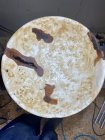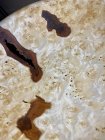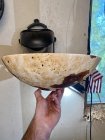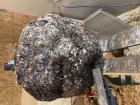
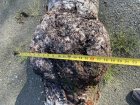
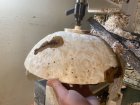
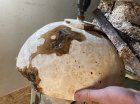
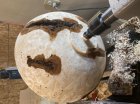
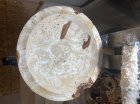
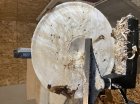 Posted in a different thread about this but wanted the advice from the AAW community as well. This is my first time processing and turning a green burl.
Posted in a different thread about this but wanted the advice from the AAW community as well. This is my first time processing and turning a green burl. I think I turned it a little thin for the amount of movement that will take place as it dries. Should I just turn it thin and let it warp? It’s a little over 16” and 4” tall 1 3/8” thick. I should add that the wood is Alaskan paper birch and is incredibly stable and hard. I’m using m42 steel sharpened on 180 CBN wheel and sharpened 3 times while hollowing.
Thanks in advance!



